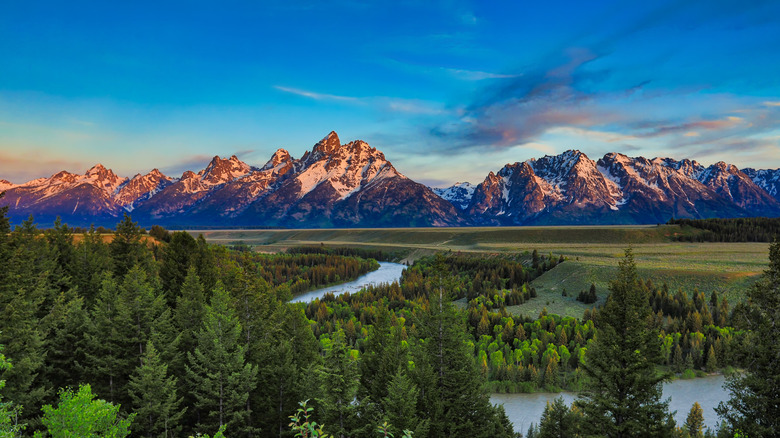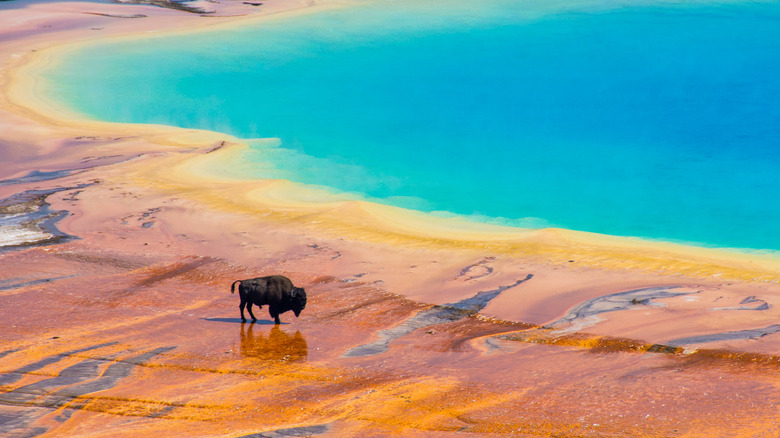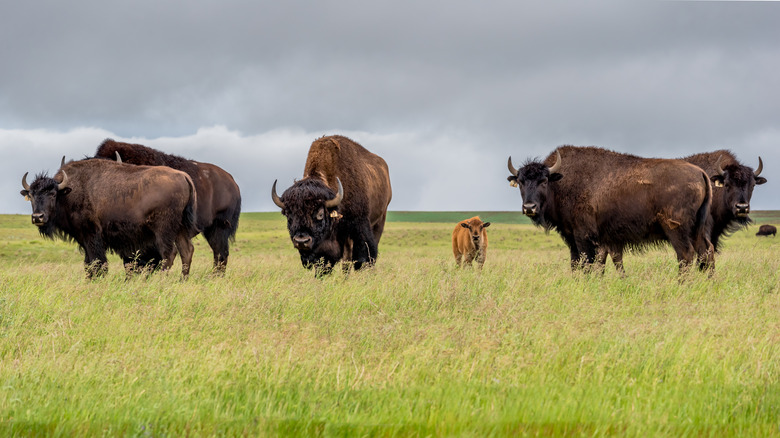The Animal That Has Injured More People In Yellowstone Than Any Other
Even though Yellowstone National Park draws millions of visitors each year, few fully appreciate just how dangerous America's first federal nature reserve actually is. According to the 1995 book "Death in Yellowstone" by author Lee. H. Whittlesey, there is a veritable laundry list of ways to take a dirt nap while exploring Yellowstone's many wonders — among them, drowning, being hit by a falling tree, inhaling poisonous gases, being boiled alive in a kaleidoscopic hot spring, or finding yourself in the path of the massive volcano that rests right below the entire park. And that's only a few of many, many other examples.
But in addition to this, there's another imminent danger for any tourist or park ranger who sets foot into Yellowstone: That's right, the possibility of an animal attack. According to the National Parks Service, all guests visiting Yellowstone are advised to keep their distance by at least 25 yards from any large animals they encounter, such as elk and bison, and as far as 100 yards away from predators like bears and wolves. Though it might be easy to assume that the animals known for their predatory acumen would be the ones to have harmed more Yellowstone visitors than others, that's not actually the case. The truth of the matter is that a typical Yellowstone guest is more likely to get hurt by a bison than a bear — and as the Associated Press noted in their April 2022 coverage of one such encounter, it's the seemingly gentle bison who are responsible for more guest injuries than any other animal.
Bison lived in Yellowstone before Yellowstone existed
According to the National Park Service, there was a time when large heards of bison not only roamed the area we now know as Yellowstone but throughout the continent of North America, with a population believed to have once numbered in the millions. Bison were of significant cultural import to many different Native American tribes within the Great Plains region, as well as a major practical resource: They provided food as well as hides, the latter of which could be used for clothing, shelter, or tools.
As the United States expanded westward in the 1880s, settlers, with encouragement and blessings from the U.S. government and military, launched a concerted campaign to force Native Americans off of their land through what one 2016 overview published by The Atlantic called "the same scorched-earth strategy that William Tecumseh Sherman, then a major general, used in his March to the Sea" during the Civil War. But instead of crops or cities, their target was bison and buffalo. Hunters and U.S. troops slaughtered countless herds and put the species on the brink of extinction. Had it not been for private ranches and efforts to rebuild the population in the 20th century, bison would've entirely been wiped out for good. In comparison to their pre-1800 populations, the Centers for Disease Control estimated in 2015 that approximately 4,900 bison were living within Yellowstone National Park.
Bison are far more dangerous than people realize
In a way, bison are like NFL offensive linemen: Despite their stocky build, they're deceptively fast. In addition to their surprising ability to accelerate by hoof, bison are also armed with a pair of sharp horns — and these two attributes can make for a dangerous combination.
In April 2022, a 25-year-old Ohio woman was injured by a bison not too far from the park's famous geyser, Old Faithful, in an area called Black Sand Basin, as the Associated Press first reported shortly after the incident occurred. Per AP, an unnamed woman approached a bison who had been walking only ten feet from a Black Sand Basin boardwalk. Within seconds, the woman was gored by the bison and thrown ten feet into the air before landing. She was then taken to an Idaho hospital where she was treated for her injuries, according to park officials.
According to a 2016 study conducted by researchers, an average of 10-13 people per year were injured by bison between 1983 and 1985 (via the Centers for Disease Control and Prevention). Luckily, this number has since dwindled, thanks to a number of programs and initiatives launched by the National Parks Service designed to inform guests of how dangerous they can be. In the intervening years, this average has significantly reduced.


